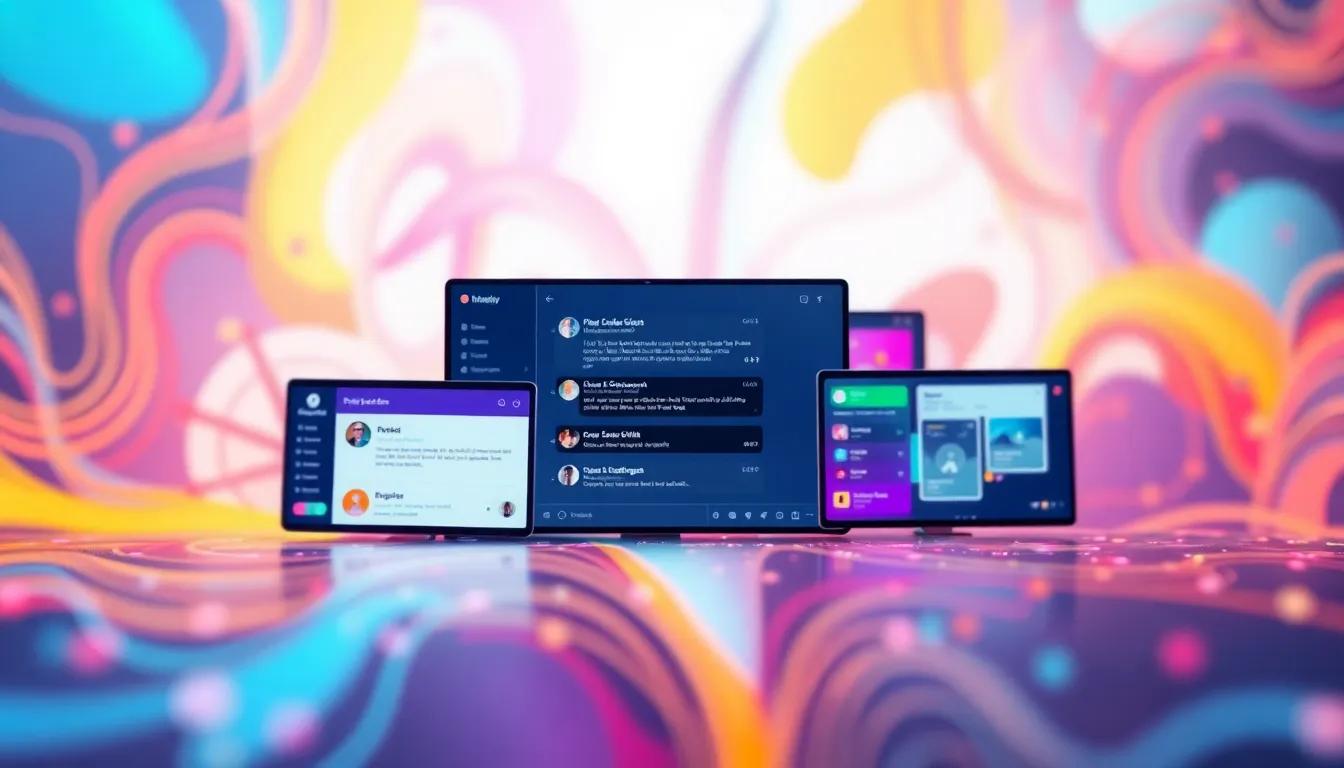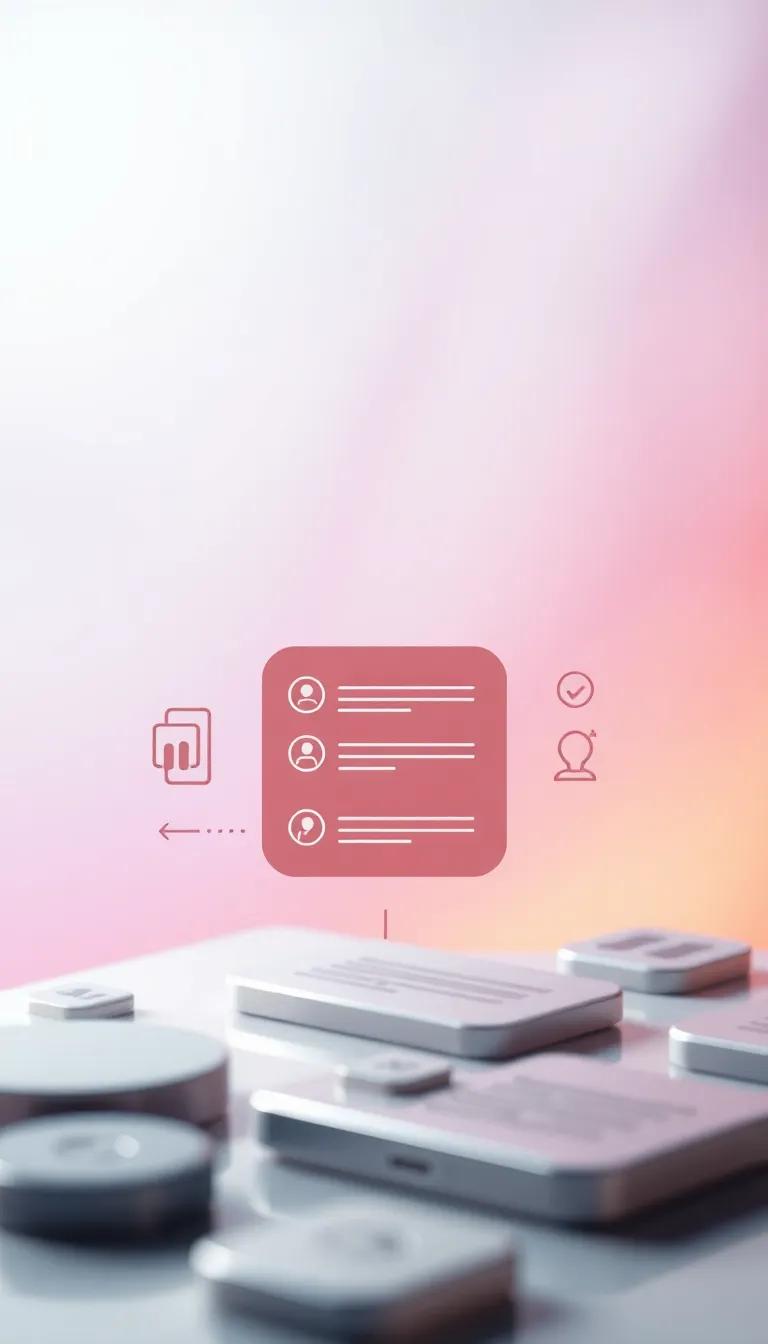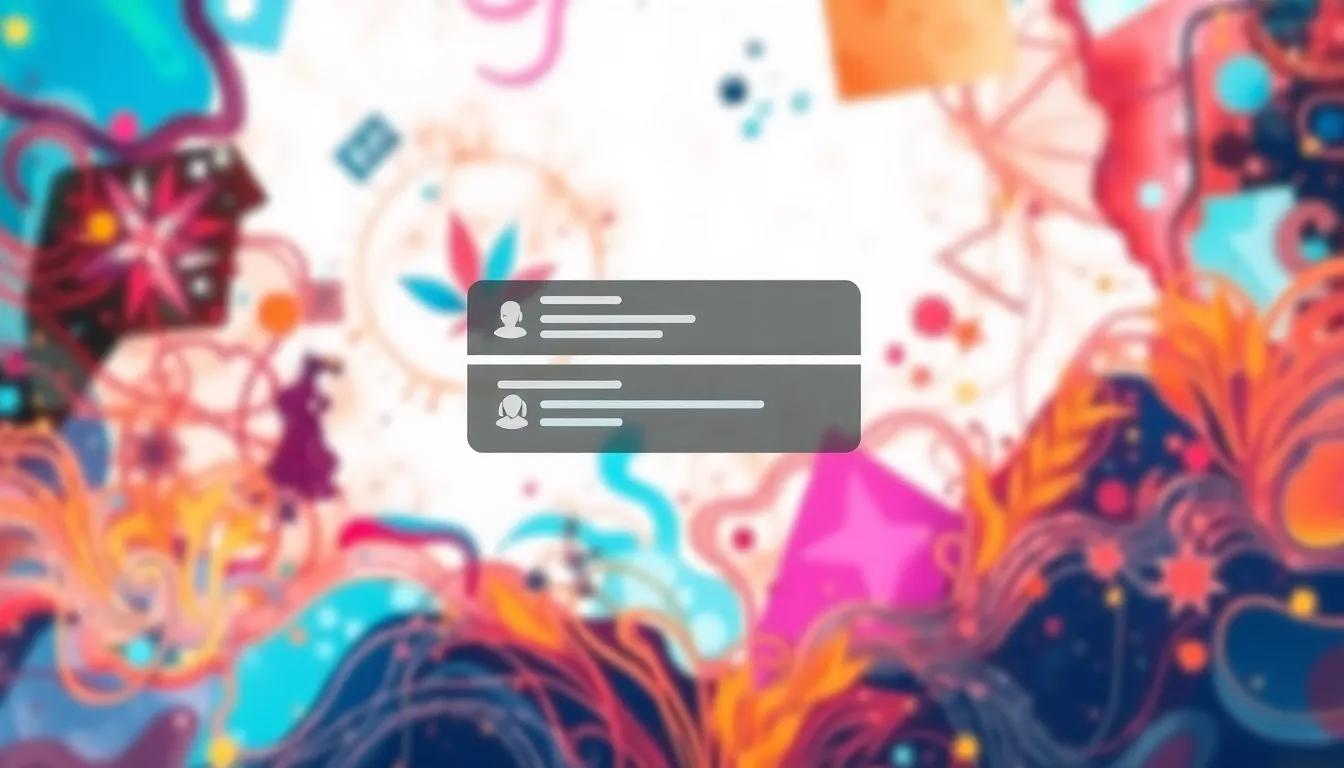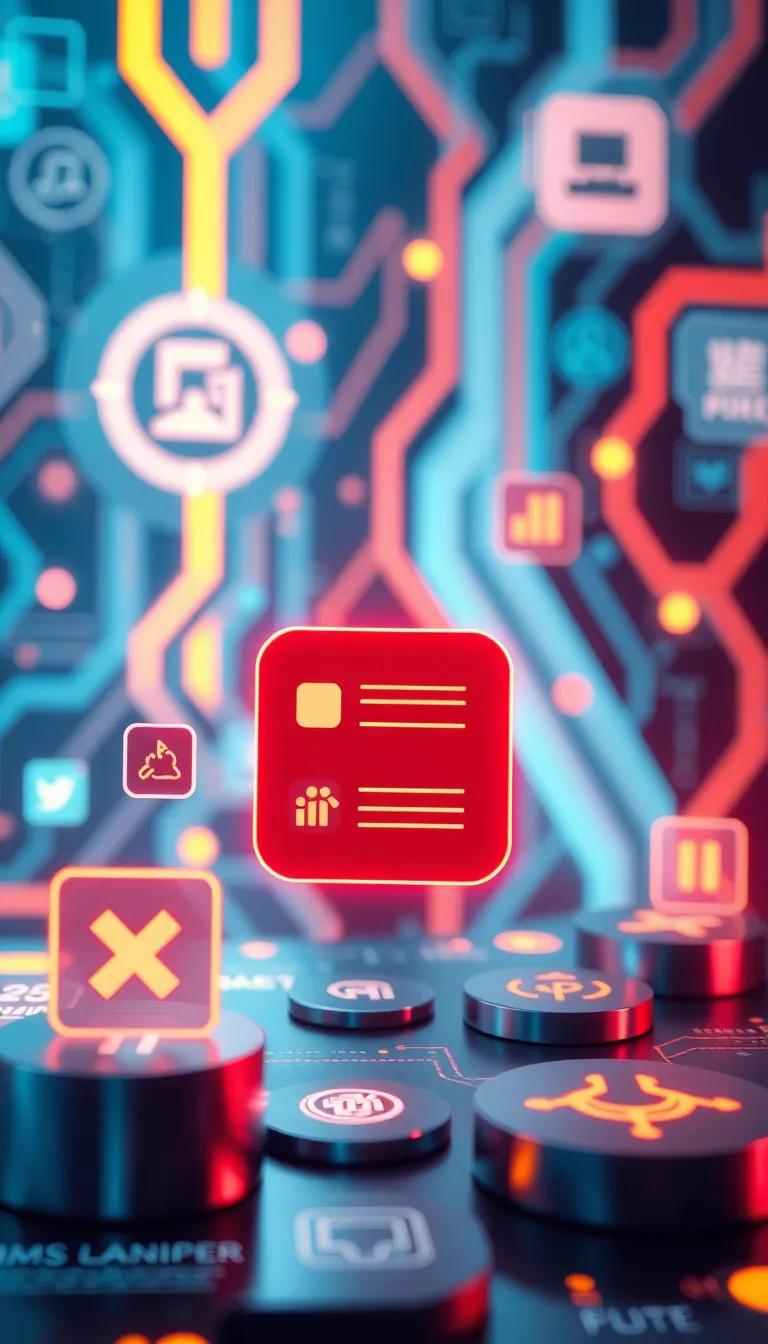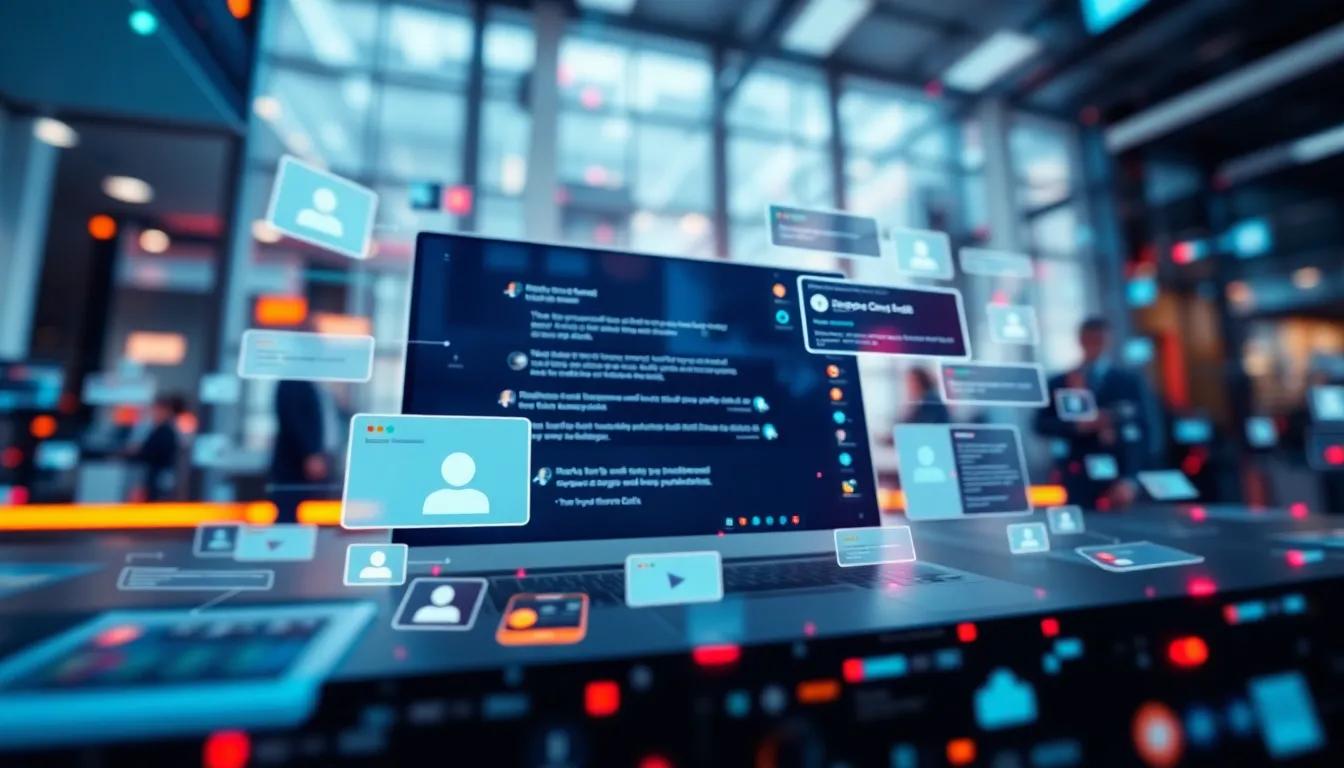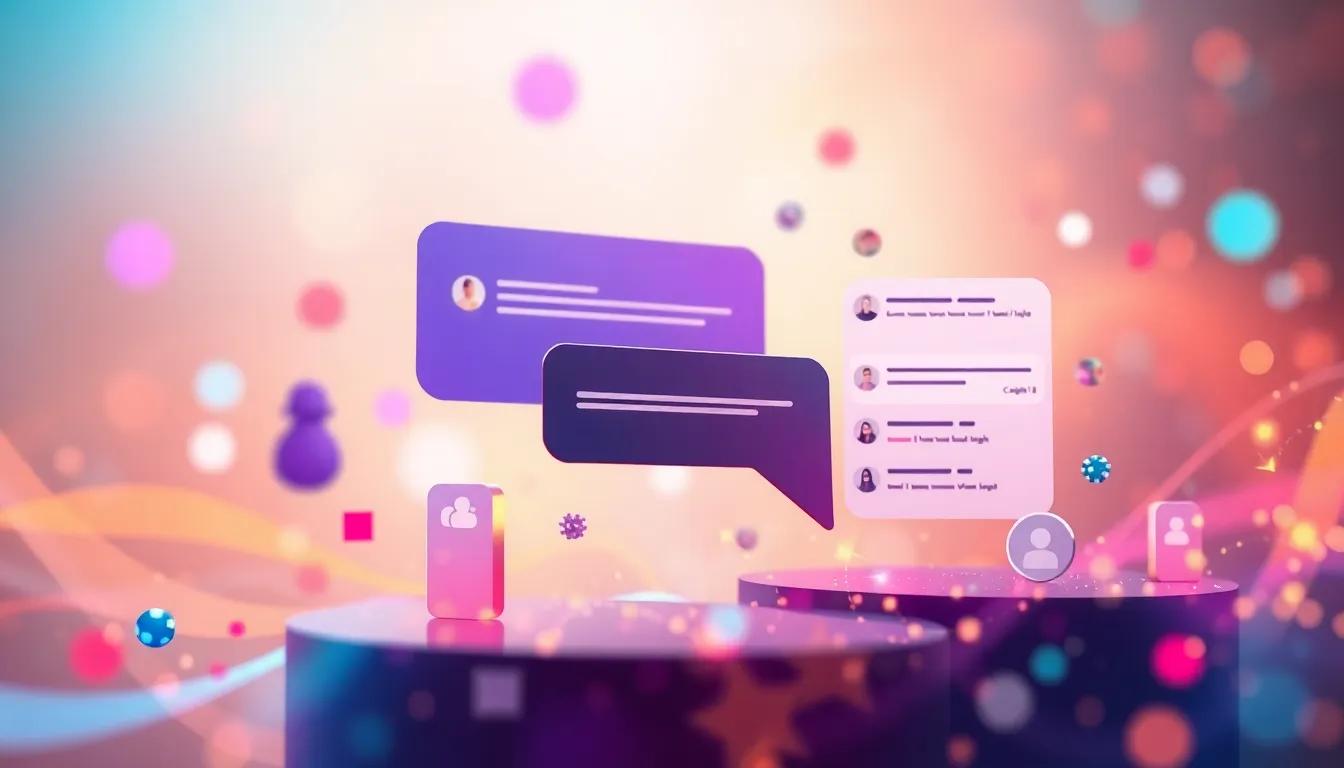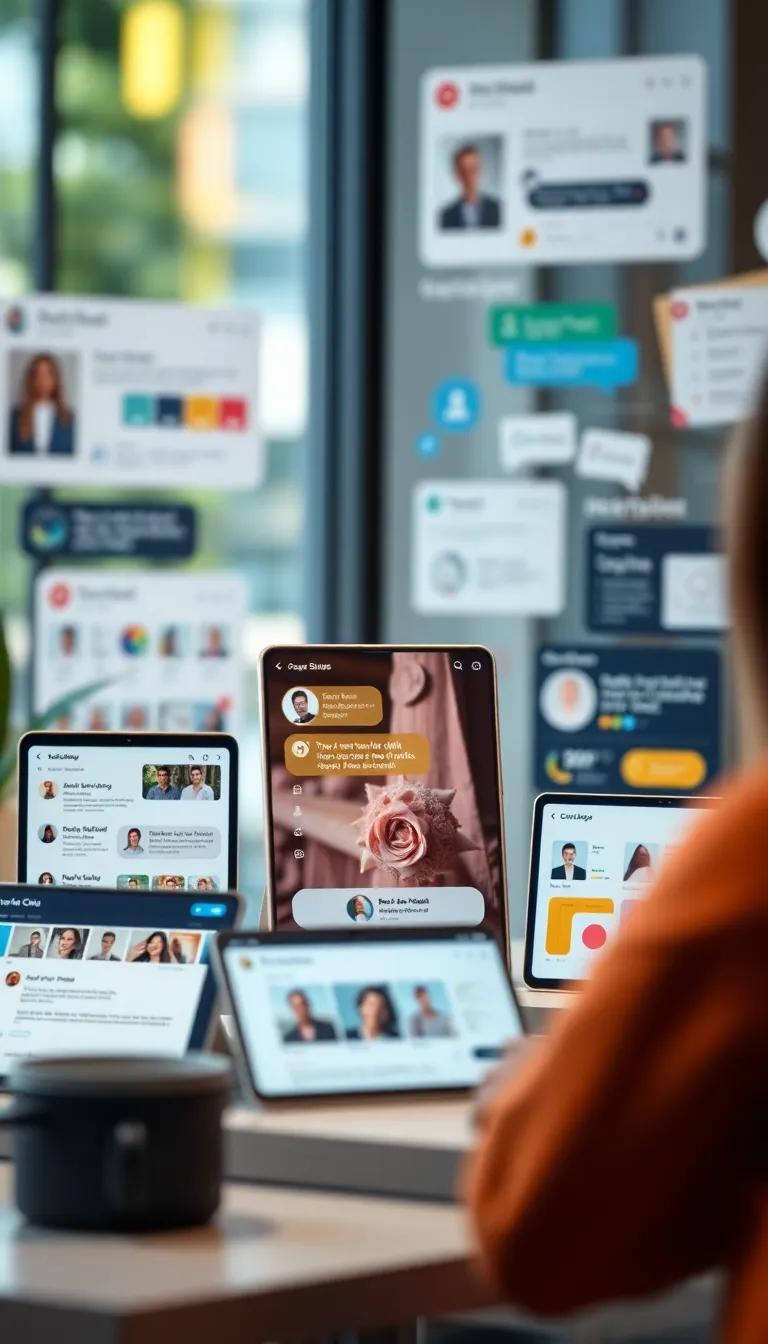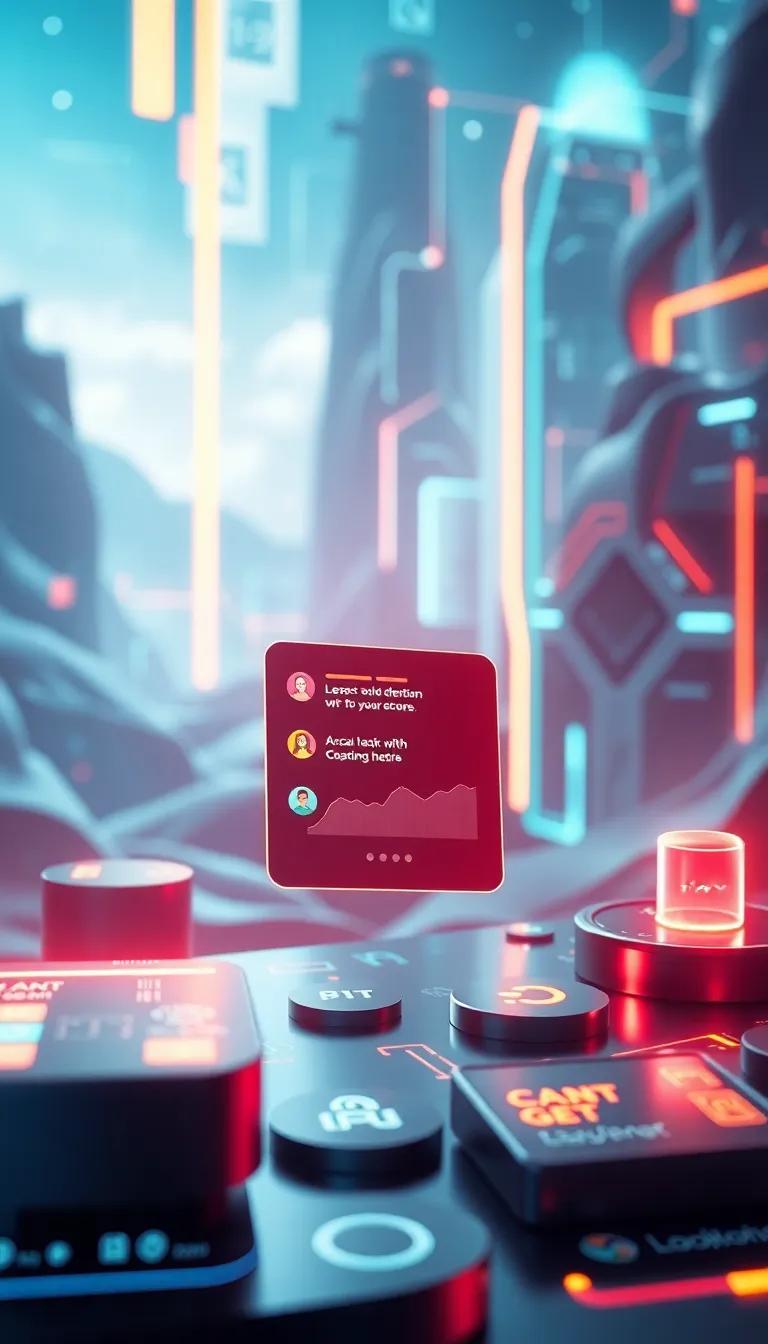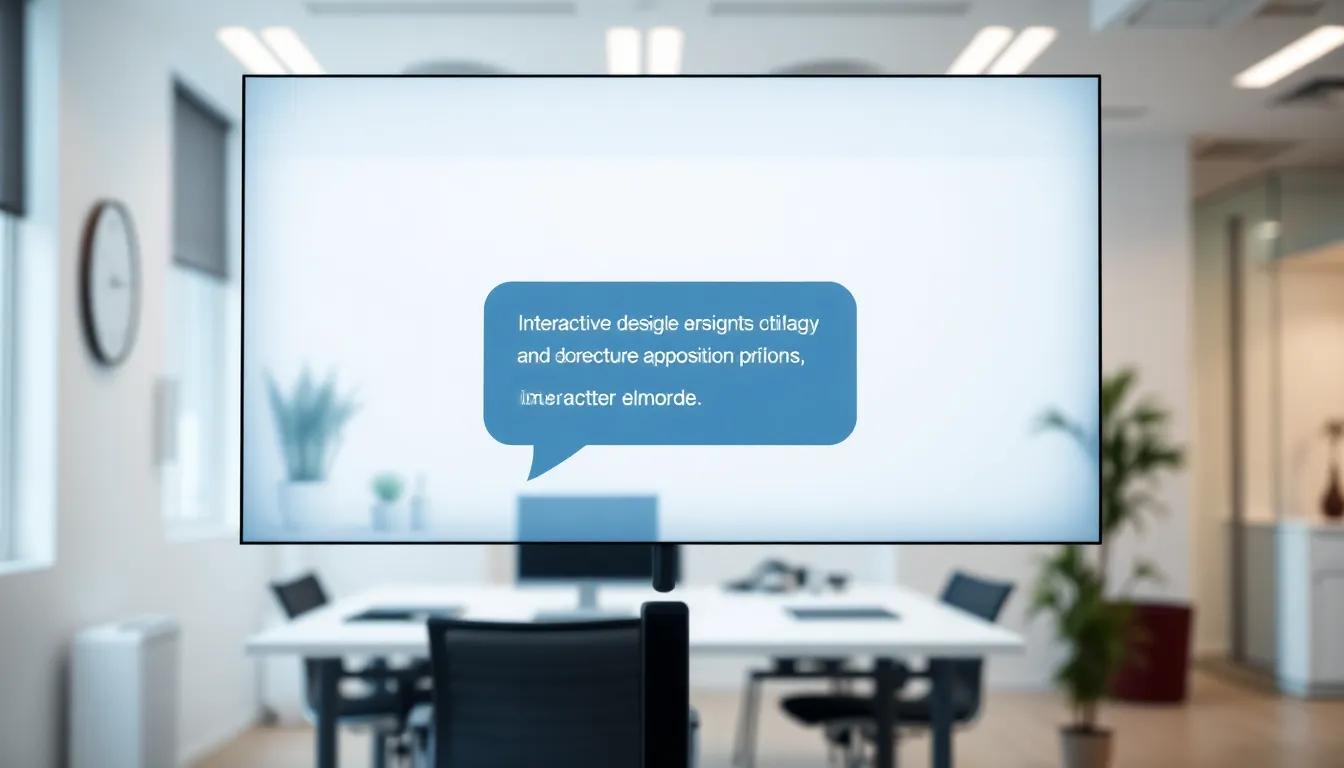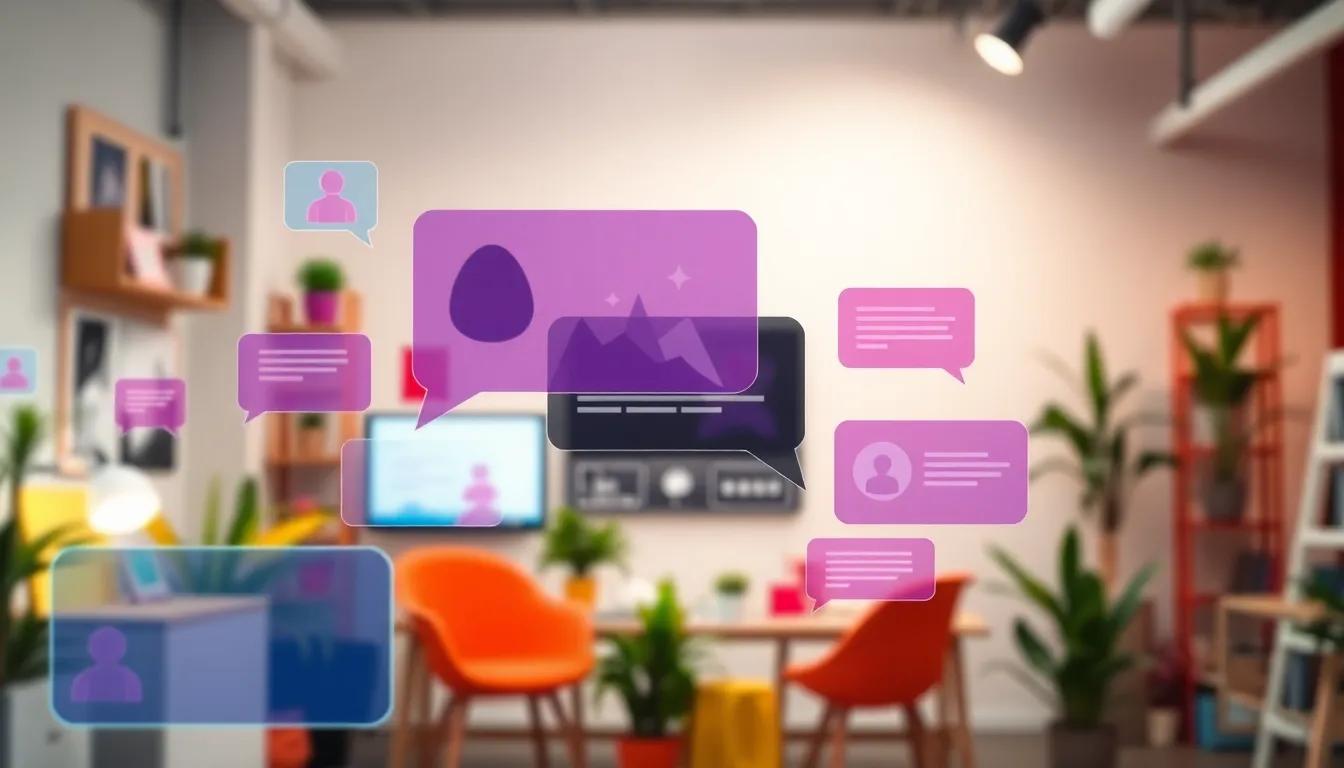Introduction
The increasing importance of user interaction on websites cannot be overstated, and a well-designed chat user interface (UI) is central to that engagement. With advanced chat technologies now at our disposal, businesses are constantly seeking fresh chat UI inspiration to improve their customer service and engagement metrics. This article explores various elements of chat interface design, supported by recent innovations and best practices that enhance usability and user satisfaction. By focusing on design principles that prioritize user experience, we can create chat interfaces that are not only aesthetically pleasing but also functionally effective.
By understanding the balance between user expectations and sophisticated design thinking, businesses can craft unique chat experiences that resonate with users and boost their website’s appeal. Whether you are a seasoned developer or a novice looking to improve your site’s chat interface, this article will provide practical insights and examples to help elevate your chat experience.
Understanding Chat UI Basics Influence of Design Aesthetics and User Flow
In digital communication, chat user interfaces (UI) serve as pivotal components that shape user interactions and experiences. The architectural foundation of a chat UI encompasses various elements that collectively determine its effectiveness. Notably, design aesthetics play a significant role in attracting and retaining user attention. This includes the visual appeal of colors, typography, icons, and overall theme consistency. A well-designed chat interface is not only visually engaging but also aligns with the brand identity, fostering a sense of trust and familiarity among users.
Equally significant is the user flow, which refers to the sequence of steps a user takes to engage with the chat feature. An intuitive user flow can facilitate seamless interactions, enhancing the overall engagement levels. For instance, a user-friendly chat entry field, accompanied by clear call-to-action buttons and automated responses that cater to user inquiries, can significantly reduce friction in the communication process. These elements enable users to focus on the conversation rather than navigating complicated interfaces, thereby promoting a more pleasant user experience.
Applying fundamental user experience (UX) principles is paramount during the design phase of a chat UI. These principles emphasize usability, accessibility, and efficiency. A chat interface that adheres to these principles ensures that users can easily locate features and understand how to use them without facing cognitive overload. For example, implementing responsive design practices ensures that the chat UI functions well across various devices and screen sizes, thus accommodating a wider audience.
Another critical aspect of effective chat UI design is feedback mechanisms. Providing users with immediate responses—such as typing indicators or acknowledgment notifications—can reassure them that their messages have been received and are being processed. This simple yet powerful feature fosters a deeper connection between the user and the chat interface, making it feel more interactive and less robotic.
The synthesis of design aesthetics, user flow, and UX principles creates an engaging chat interface that can significantly influence user satisfaction and retention. A well-executed chat UI not only bolsters a site’s overall appeal but also enhances its effectiveness in facilitating meaningful interactions, thereby playing a crucial role in improving customer engagement and support.
Innovative Design Trends to Enhance Chat UI Functionality and Appeal
Current Trends in Chat UI Design
As the digital landscape evolves, new design trends in chat interfaces are emerging, capturing user attention and driving engagement. Modern chat UIs are putting a significant emphasis on aesthetics and usability, marrying functionality with visual appeal. A key trend is the use of personalized chat experiences. This involves customizing chat interfaces based on user data such as preferences, behavior, and location. Tailored greetings, dynamic visual elements, and relevant content recommendations not only make users feel valued but also encourage them to interact more frequently.
Minimalism is another design trend that has gained traction. Clean lines, ample white space, and simplified elements allow users to focus on the conversation without distractions. This approach not only improves the visual hierarchy but also enhances accessibility. Users can navigate chat interfaces effortlessly, finding what they need without confusion. Adopting a minimalistic design can lead to quicker responses and improved satisfaction rates.
Integration of bold typography and vibrant color palettes are also shaping the current chat UI landscape. Strong typography can communicate urgency or importance, while colors can evoke emotions and help prioritize messages. A well-chosen color scheme can significantly influence user perception and enhance the overall experience of the chat interface. Using colors consistently across the UI contributes to brand identity, creating a cohesive and visually appealing environment for users.
Functional Innovations Transforming User Engagement
Interface elements like quick reply buttons and emoji integration are redefining user interactions in chat UIs. These features simplify responses, allowing users to engage with minimal effort. Emojis, GIFs, and stickers add a layer of fun and expressiveness, making conversations feel more human and relatable. This playful integration can be particularly effective in nurturing customer relationships and promoting brand loyalty.
Another notable trend is the incorporation of micro-interactions within chat interfaces. These subtle animations or feedback mechanisms respond to user actions, enhancing the overall engagement by making interactions feel more dynamic and alive. When users see visual feedback after sending a message—like a “sent” animation—they feel more connected to the platform and are more likely to continue the interaction.
Leveraging these innovative design trends can significantly elevate the appeal of chat interfaces, making them not just a tool for communication but also an engaging part of the user experience. This enhances user engagement by creating more meaningful and enjoyable interactions, setting a robust foundation for future enhancements in chat technology.
Integrating AI in Chat Interfaces Revolutionizing User Engagement
The integration of artificial intelligence into chat interfaces marks a significant shift in how businesses and users interact. This technological advancement is not merely a trend; it is an essential evolution that enhances user experience and streamlines communication. AI-driven chat interfaces empower businesses to automate responses, manage user queries efficiently, and deliver personalized interactions that increase customer satisfaction.
The Rise of AI-Powered Chatbots
AI-powered chatbots have emerged as a pivotal element in modern chat interfaces. Unlike traditional chat systems that rely on pre-defined responses, these intelligent bots use natural language processing to understand user inquiries and respond appropriately. This capacity for comprehension enables them to handle a broad range of questions without the need for human intervention. As a result, businesses can offer round-the-clock assistance, ensuring that users receive help anytime they need it.
One of the most compelling features of AI chatbots is their ability to learn from interactions. By analyzing conversation patterns, these bots can refine their responses over time, becoming more adept at delivering accurate information. This learning loop not only improves user satisfaction but also reduces the workload on human customer service agents.
Enhancing User Interactions Through Personalization
Another remarkable aspect of AI in chat interfaces is personalized user interactions. AI systems can track user preferences and previous conversations, allowing them to tailor responses and recommendations effectively. When a user engages with a chatbot, the personalized approach creates a more engaging experience. For example, when a returning customer asks for assistance, the chatbot can recall past interactions and provide relevant information, making the user feel valued and understood.
The implementation of AI-driven analytics further enhances the functionality of chat interfaces. Businesses can gain insights into user behavior, identifying common issues and preferences. This data allows companies to adapt their services, optimize chat flows, and implement strategic improvements that resonate with their target audience.
Integrating AI into chat interfaces can lead to significant cost savings. By automating routine inquiries and support tasks, businesses can allocate resources more effectively, focusing on complex issues that require human expertise. This combination of efficiency and innovative technology is transforming the landscape of user engagement on digital platforms.
Accessibility in Chat User Interface Elevating the Experience for All Users
Understanding the Importance of Accessibility
In the design of chat user interfaces, accessibility must be a foundational aspect rather than an afterthought. This commitment ensures that everyone, including individuals with disabilities, can engage with your chat functionalities seamlessly. By prioritizing accessibility, businesses not only comply with legal mandates but also foster inclusivity, enhancing the overall user experience. It is crucial to recognize that the failure to accommodate all users can lead to a significant loss of potential customers and damage to brand reputation.
Key Guidelines for Designing Accessible Chat Interfaces
Effective accessibility in chat UI design hinges on adhering to established guidelines that facilitate usability. The Web Content Accessibility Guidelines (WCAG) offer a robust framework that designers can use to create effective chat interfaces. Below are pivotal guidelines:
- Text Alternatives: All visual elements within the chat interface should have text-based alternatives. This includes images, buttons, and icons, making it possible for screen readers to convey information to visually impaired users.
- Keyboard Navigation: Ensuring that all chat functionalities are fully operable via keyboard shortcuts is crucial for users who may have motor disabilities that prevent precise cursor control.
- Color Contrast: Text visibility is paramount. Designers should ensure adequate contrast between text and its background to facilitate readability for users with color vision deficiencies.
- Clear Language: Using simple and straightforward language within chat interfaces enhances comprehension. Avoiding jargon and complex sentence structures makes communication accessible to a broader audience.
- Consistent Layout: A predictable and consistent layout enables all users, including those with cognitive disabilities, to navigate the platform effortlessly. Familiarity with interface elements reduces cognitive load.
- Screen Reader Compatible: Ensuring that the chat interface is compatible with popular screen readers permits individuals who rely on assistive technologies to interact with the chat as intended.
Implementing these guidelines not only broadens the reach of your chat interfaces but also positions your brand as a leader in customer service excellence. Accessibility transforms chat from a mere transactional tool into an inclusive platform that genuinely engages all users, paving the way for enhanced satisfaction and loyalty.
Case Studies of Successful Chat UIs Principles of Design and Engagement
Successful Examples of Innovative Chat User Interfaces
The exploration of successful chat user interfaces reveals significant insights into how effective design principles and user engagement strategies can transform digital communication experiences. One prominent example is Slack, a platform that has gained significant traction among teams and organizations. Slack’s chat UI is minimalistic yet functional, providing users with a sleek interface that is easy to navigate. The application’s use of channels, direct messages, and thread features encourages collaborative discussions while allowing users to focus on specific topics without feeling overwhelmed. This structure not only enhances user experience but also drives engagement through organized communication.
Another noteworthy case is Intercom, which skillfully integrates chat functionality into customer interactions. Known for its proactive messaging capabilities, Intercom uses behavior-triggered chats that allow businesses to reach out to users at strategic moments. This ability to initiate conversations based on user behavior increases the chances of engagement and conversion. The visual design of Intercom’s chat widget is clean and inviting, enhancing its accessibility while providing real-time responses to users’ inquiries.
Lessons Learned from Successful Chat Interfaces
Both Slack and Intercom illustrate the importance of intuitive design in chat interfaces that encourage user interaction. Key lessons drawn from these case studies include:
- Simplicity and Clarity: A clutter-free interface simplifies navigation, making it easier for users to engage without distraction.
- Contextual Engagement: Leveraging user data to initiate chats at the right moments can significantly boost interaction and user satisfaction.
- Visual Appeal: The aesthetic design of chat interfaces, including color schemes and typography, can enhance user experience and keep users coming back.
- Feedback Mechanisms: Integrating user feedback into the chat process helps in refining the UI for better responsiveness and usability.
Through these examples and lessons, it becomes evident that an effective chat UI not only facilitates communication but also fosters a productive relationship between users and brands. The ongoing drive for clever design and innovative engagement tactics holds the potential to further enhance the user experience in the realm of digital communication. As we look toward future trends in chat UI design, these successful case studies set a strong foundation for ongoing innovation.
Future Directions for Chat UI Design Envisioning Tomorrows Interfaces
Emerging Technologies and Trends Shaping Chat UIs
The landscape of chat user interface (UI) design is continuously evolving, fueled by rapid advancements in technology and shifting consumer expectations. As we look toward the future, it becomes clear that several key trends and technologies are poised to redefine chat interfaces, enhancing user engagement in unprecedented ways. The integration of artificial intelligence (AI), natural language processing (NLP), and immersive digital experiences are leading this transformation.
AI-driven chatbots are expected to become increasingly sophisticated, offering personalized and context-aware interactions. These chatbots will utilize machine learning algorithms to analyze user data, thereby tailoring conversations based on individual preferences and behaviors. By adopting a more conversational tone and responding to specific user queries intelligently, brands can foster deeper connections with their audience.
NLP technology will play a pivotal role in facilitating these advanced interactions. As it becomes more refined, chat UIs could potentially understand not just what users are saying, but also the context and emotions behind their words. This development would allow for more human-like exchanges, where the interface not only responds but also engages in empathy-driven conversations, thereby enhancing user satisfaction and retention.
Another promising direction is the incorporation of augmented reality (AR) and virtual reality (VR) into chat interfaces. Imagine a scenario where users can engage with a brand via a 3D avatar in a virtual chat room, allowing for a more immersive interaction. This visual dimension could transform the static chat interface into a vibrant environment, providing users with a unique way to experience brand discussions, product demos, and customer service experiences.
The growing trend of mobile-first design will drive the creation of chat UIs that are optimized for touchscreen interactions. Features such as gesture-based controls, touch-friendly layouts, and responsive design elements will become standard expectations. This shift approach aims to maximize user engagement through interactive and intuitive navigation, ensuring that chatting on mobile devices remains seamless and effective.
As we embrace these emerging technologies and trends, the future of chat UI design appears to be rich with potential. Harnessing these innovations will not only improve the functionality of chat interfaces but also empower brands to connect with their customers in more meaningful and engaging ways, laying the groundwork for a new era of digital communication.
Conclusions
The right chat user interface can significantly impact user engagement and customer satisfaction on your website. By implementing innovative designs and focusing on user-centered principles, businesses can transform their chat interfaces into powerful tools for communication. From utilizing inviting visual elements to ensuring seamless interactions, the possibilities for improvement are vast and essential for today’s digital landscape.
By staying informed about the latest design trends and technologies, businesses can remain competitive and create chat interfaces that truly enhance the user experience. Ensuring a balance between aesthetics and usability will lead to higher engagement rates and positive user feedback, ultimately driving growth and success.

